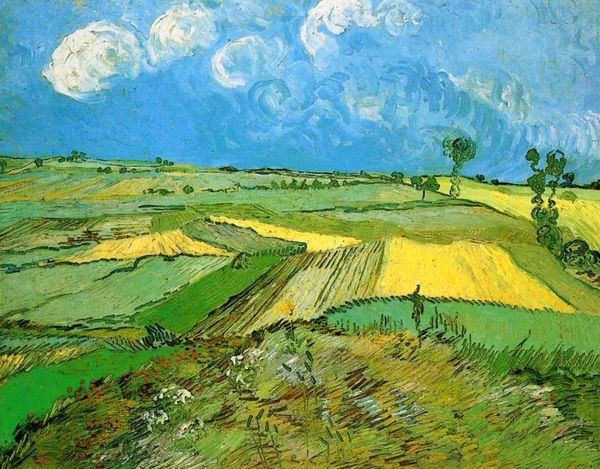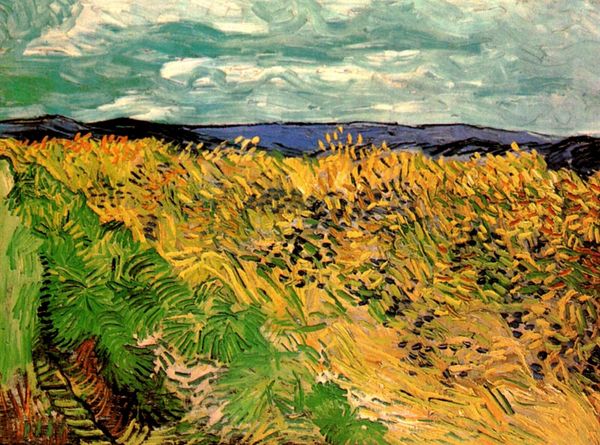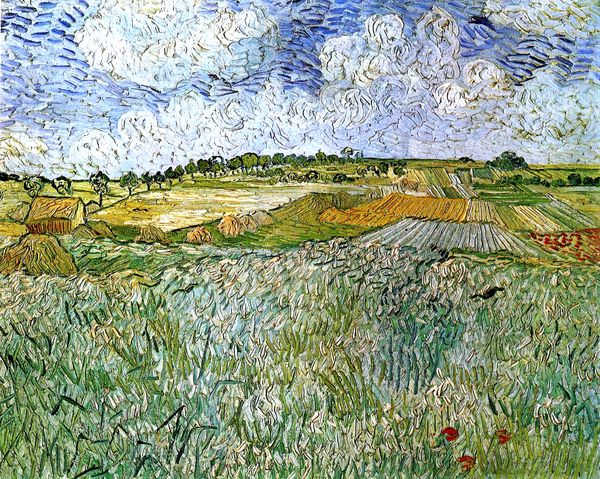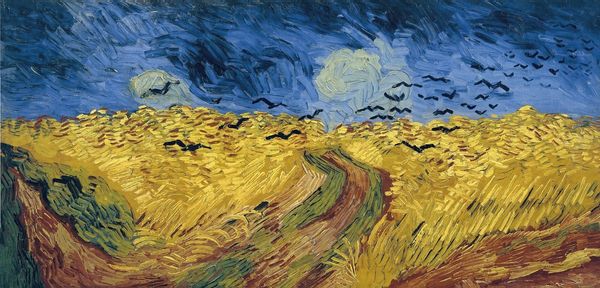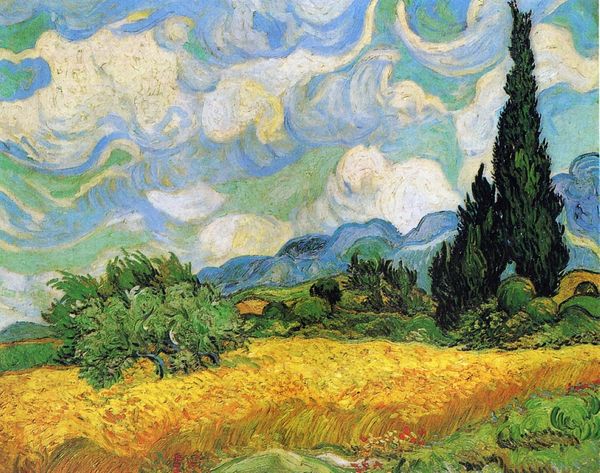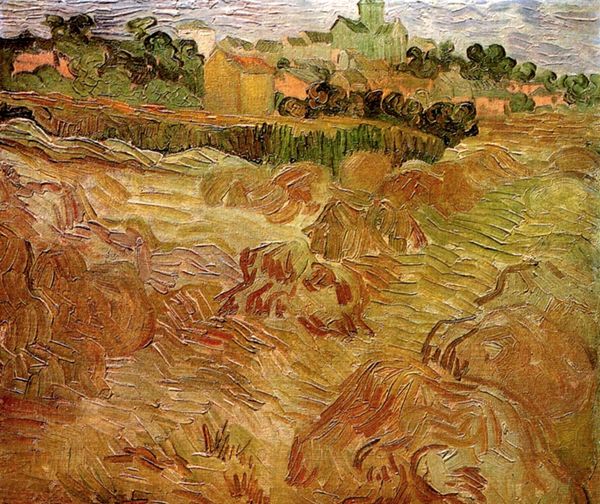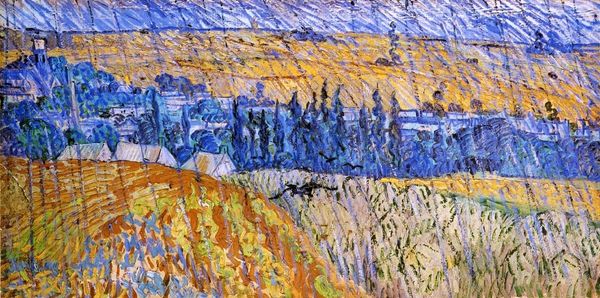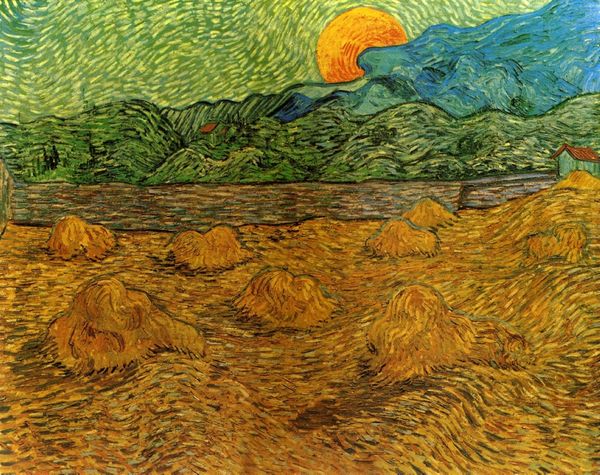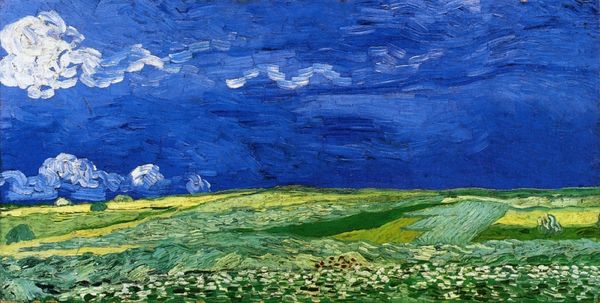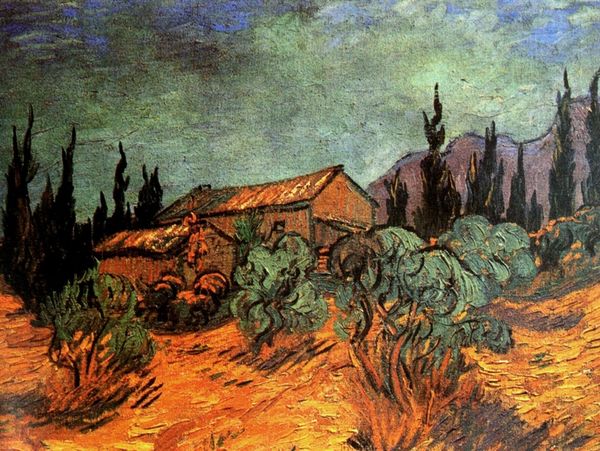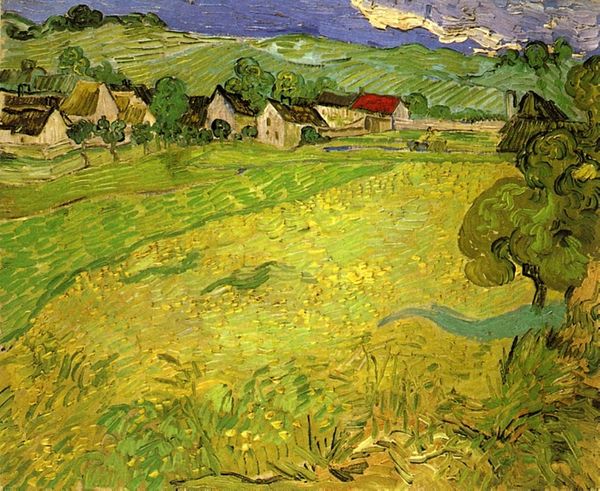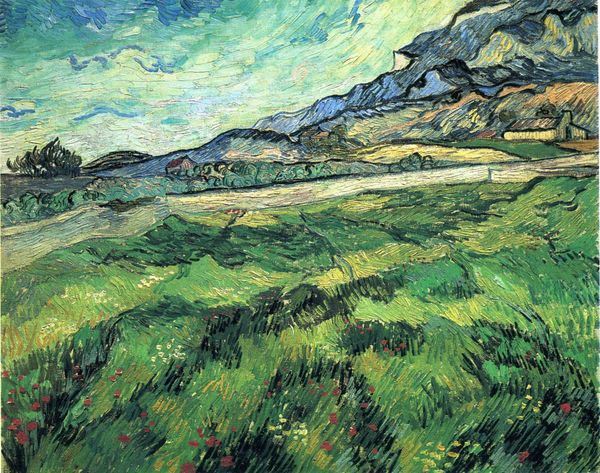
Dimensions: 50 x 65 cm
Copyright: Public domain
Editor: This is Van Gogh's "The Fields," painted in 1890, with oil paint. The churning sky and the heavy application of paint – the impasto – makes me think about the labor involved in both farming the fields and creating the artwork. What catches your eye about it? Curator: For me, the intense materiality speaks volumes. Look at how Van Gogh uses the oil paint, almost sculpturally, to depict the fields and the sky. It's not just about representation; it's about the very physicality of the labor and materials. Consider how the process of making mirrors the act of tilling the soil. Editor: That's interesting. It's almost like he's mimicking the farmer's actions with his brushstrokes, showing the raw energy involved. Does the setting affect how you perceive its materiality? Curator: Absolutely. Van Gogh painted this in the asylum at Saint-Rémy. The field is no longer simply a field; it's the object of labor and of viewing and also a raw resource converted through strenuous production of art and grain. Editor: It is a very confined picture space though. I wouldn't have immediately thought of an asylum based on the subject. The horizon feels a long way away... Curator: And yet, it does. The low horizon, along with his visible labor, makes me wonder how he regarded the working people from this area in France. Is it about documenting a landscape, or a reflection on its people who sustain it? The labor involved is inherent in both production and how we should interpret Van Gogh’s work. Editor: I hadn't considered that perspective before, thank you! Seeing the art this way encourages you to connect to labor practices outside the subject and production. Curator: Indeed. Considering materiality and production opens so much about social structures and the labor inherent to both art and society.
Comments
No comments
Be the first to comment and join the conversation on the ultimate creative platform.
